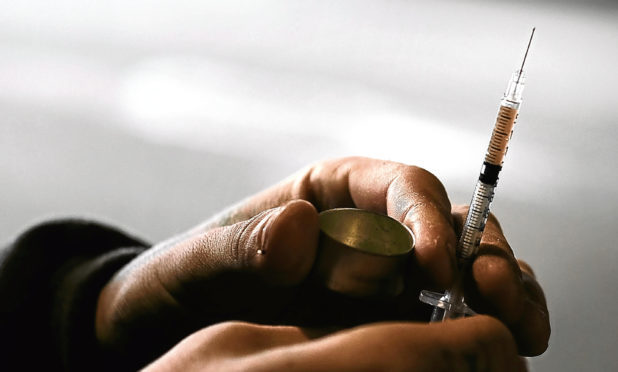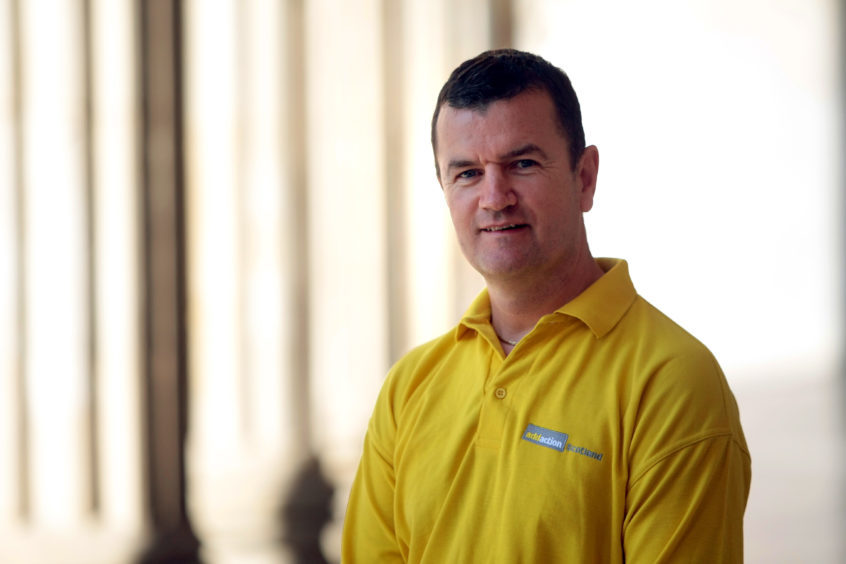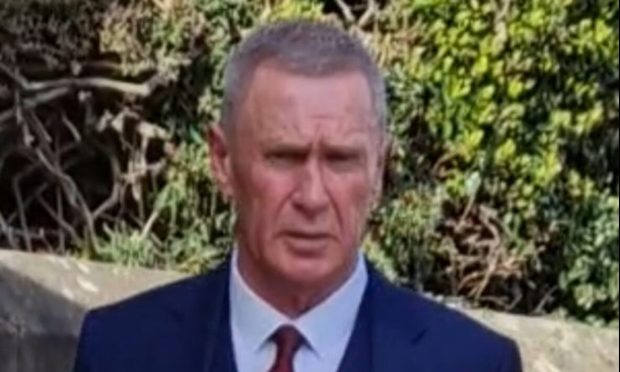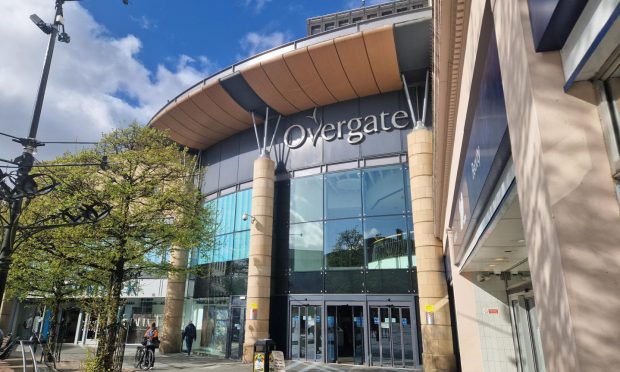A leading addiction expert said Dundee is not receiving the help it needs to free itself from the grip of illegal drugs.
Drug deaths in Tayside have doubled in the last decade, according to a new report by NHS Tayside.

Last year there were 78 deaths in the area, compared to 73 in 2017, the Drug Deaths In Tayside 2018 report reveals.
More than one person a week is dying in Dundee, while the number of deaths in Perth and Kinross has nearly doubled in a year.
Angus was the only area in Tayside to buck the worrying trend.
Drug deaths in Tayside ‘continue to rise’ with 53 overdoses in Dundee alone in 2018
Dave Barrie, Addaction service manager, said the “continual rise” of drug deaths in and around Dundee is “upsetting”.
He called on service providers to “redouble” their efforts to reach out to people struggling with addiction issues.
He said: “It’s clear this is part of a national picture, but it’s extremely concerning that this is still happening.
“There’s a lot of hard work and effort going into reducing this, but the numbers continue to rise.
“We need to look carefully at what we are doing and do things differently.”
Mr Barrie suggests ideas such as shooting galleries could help reduce the number of deaths.
He added: “We need to refocus our efforts with the most vulnerable people. I think there is a growing understanding that safe zones are needed, and evidence shows this can help reduce fatal overdoses.
“In Dundee we are awaiting the report from the drug commission, so we are looking forward to using that as a way to improve our work.
“It’s really difficult to take any positives from the report.
“We are very much at the coal face of this and our heart goes out to every family that is having to deal with this.
“Every service in Dundee needs to redouble their efforts and work together to do something about this. We need to start thinking outside of the box.
“We need to reach out to more people. If anyone would like support dealing with their own drug addiction or that of someone they know, then please reach out to us.”
The rate of drug deaths in Tayside is now at 0.19 per 1,000 people.
There has been a 110.8% increase in drug deaths since the annual average in 2009-2011.
The majority of deaths are occurring in the most deprived areas, with the least deprived seeing no known drug overdoses last year. The most deprived areas made up 60% of the deaths.
Recommendations on tackling the issue include ensuring people with problematic drug use are provided with appropriate mental health support if needed, in addition to managing substance use concerns.
The report also recommends continuing to progress work around non-fatal overdoses and opportunities for targeted early intervention to reduce risk of future drug deaths.
Sharon Brand, founder of Recovery Dundee, agreed that the figures are worrying.
She said: “About half of people are found to have methadone in their system, so they were already getting support in some form, so something isn’t working.
“When someone goes to the doctor for help they believe they hold all the answers. There is a power imbalance. If people don’t have control over their own treatment they believe the answer lies somewhere else.
“Everybody we have worked with in the last two years has stayed clean. It’s them that are doing it, we’re just there for them.”
North east region MSP Bill Bowman said: “Scotland is in the grip of a drug deaths crisis and Dundee is unfortunately at the forefront.
“However, it looks like the modern problem is not solely to do with heroin.
“The amount of other substances found in the bloodstream of people who overdose is concerning.”
Substance misuse is ‘priority’ for NHS
Dr Emma Fletcher, chairwoman of the Tayside Drug Death Review Group and consultant in public health medicine, said: “Substance misuse is a major public health concern and remains a priority for NHS Tayside and the three Alcohol and Drug Partnerships in the Tayside area.
“The report shows that the majority of drug deaths occur in people who have experienced considerable life adversity, often from a young age. Problematic drug use is rarely an independent choice by an individual but the result of complex social, economic and health factors,” she said.
“Naloxone is effective at reversing the effects of opioids such as morphine, heroin, codeine and methadone, and the naloxone programme is being extended and organisations within the third sector can now offer kits and provide training.
“However, this report shows a concerning trend in the increase of certain drugs such as pregabalin, etizolam and cocaine present at the time of death, in addition to opioids.”
Identifying new trends
Drug death figures on Tayside are collated from sudden death reports provided by the police and focus specifically on accidental deaths.
Many deaths involve various factors, and where a post- mortem toxicology report notes the presence of a controlled substance but it is not a “crucial” factor it is not included as a confirmed case by the Tayside Drug Death Review Group.
The figures differ from those released by the National Records of Scotland, which include “intentional self-poisoning where illicit substances are present”.
The report states: “By continuing to use the definition for a drug death (as opposed to a drug-related death) we are able to work more reactively to emerging trends (as we are relying on police notifications).
We can also consider deaths that have occurred as the result of a non-intentional drug overdose specifically.”










